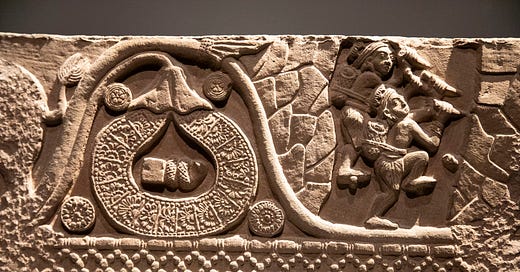Railing coping with forest dwellers scaling or quarrying a rock face; Bharhut Great Stupa, Madhya Pradesh—Shunga, ca. 150-100 BCE—SandstoneNational Museum, New Delhi
From the Metropolitan Museum of New York, show, Tree and Serpent
In some senses, the whole point of joining the three centers together in the action of “inner work” is so that conscience can enter the present moment.
Obstructions to this always begin in willfulness; and willfulness always begins with a refusal of one kind or another to work in proper order, to achieve a correct alignment.
This isn't a complicated matter.
First of all, the principles: the three centers, intellect, body, and emotion, work at quite different speeds, and if one is actually observing oneself (inhabiting the moment of being, rather than thinking about it) one quickly begins to see how slow the intellect is. It needs a quicker partner to encounter the world with it; and that more nimble partner, closest to it in speed, is the body. The intellect doesn't connect effectively with the emotions — they’re much faster still, and there’s a “break”—a disconnect— between the two whenever they try to work directly together. Thus emotion generally gets the better of intelligence; and that simple phrase explains a lot of what goes wrong in the world.
Keep reading with a 7-day free trial
Subscribe to Zen, Yoga, Gurdjieff: Lee's Gurdjieff Newsletter to keep reading this post and get 7 days of free access to the full post archives.





